History of the Festa do Carneiro ao Espeto®
Discover 50 years of our History
History
50 years tour
Each year, as if it were a ritual, arrangements are made, the sun sets, the night comes and a new day begins. At this dawn the pieces of oak wood slowly begin to play their part. It is six o’clock in the morning, and the dozen or so expert grillers begin their work, which will last for more than seven hours, just enough time for the meat to reach the right point of flavour. The Carballeira de Santa Lucia (or “Da Fonte Alta”) becomes, usually under a scorching sun, the perfect setting for tasting the Carneiro ao Espeto. A tradition that goes back 50 years.
Background
A grill brought from Argentina
There is already oral evidence that in 1923 it was grilled this way in Moraña. Mr. Eduardo Fariña Peña, born in 1900 and who returned to Spain in 1934, bringing with him from his time in Argentina the “asados” in the Pampero style, must be mentioned. Once in our country he continues with what he knows best, an expert in that technique, he will make hundreds of “asados” in Galicia.
His reputation spread to the extent that the personalities of the time claimed him for his mastery.
We can see in different press releases that D. Eduardo is attributed with the origin of the Festa do Carneiro, and this is not correct, he was not the precursor nor will he grill at the party, however, he would undoubtedly be the “master” of many grillers in Moraña.
From “Festa da Xuventude” to “Festa do Carneiro”
The young people of Moraña keep the flame alive.
Upon the initiative of the priest of Saiáns, José Lago Cambeiro, and a group of young people from Moraña, the so-called “Festa da Xuventude” (Youth Festival) was born in 1963 in Moraña, a celebration that sought to involve the young people of the town in its organization. At that time, Mr. Laurentino Castro was the mayor of Moraña and this celebration was a response to the need to hold an event in the centre of the town, which would represent all the parishes together, as the celebration of Santa Lucía in the Town Hall Square had not been held for years.
Those were times with little freedom of expression under a strong dictatorship, times in which the Galician language had all the obstacles. Even so, they did not stop and managed to obtain the first posters in Galician, an achievement for this period. In 1969, the Festa da Xuventude and the I Festa do Carneiro shared a poster, with dates that would also change, as it was initially held on the first Sunday in August. As it coincided with the Albariño and Viking Landing festivals, it was decided to fit it on the last Sunday of July
A constant evolution
The event grows over the years
The Festa do Carneiro ao Espeto® began shyly, with few units and sprinkled with the famous “agileis mójilis” sauce and with very few attendants: only 3 or 4 tables composed by neighbours from Moraña.
In 1970 the menu was implemented but with booking. For an affordable price, each lot for 16 people included one carneiro (ram), 50 sardines, Herbón peppers, corn and wheat bread and an “ola” (19 litres) of local wine.
As time goes by, we see from the headlines that thousands of people share a day every year at the mythical carballeira, and that each edition exceeds the previous one.
Last Editions
The Council takes over
In the 1990s, the Council had to take over the organisation of the event, as the young people could not go ahead with it. It is at this time, when the Festa do Carneiro ao Espeto® takes a definitive step in its evolution, starting to increase greatly the number of participants and lots, together with the improvement in the activities and shows of the celebration. In addition, at the beginning of the century, it was given the denomination of Festa de Interese Turístico Galego (Galician Tourist Festival), another endorsement that increased its cachet and turned it into a reference festival in our country.
Thus we reach the first 50 editions, half a century of history of a path carved by all the people from Morana, who turned the Festa do Carneiro ao Espeto® into the great reference of the current gastronomic events. A festival not to be missed and worth discovering and enjoying.

